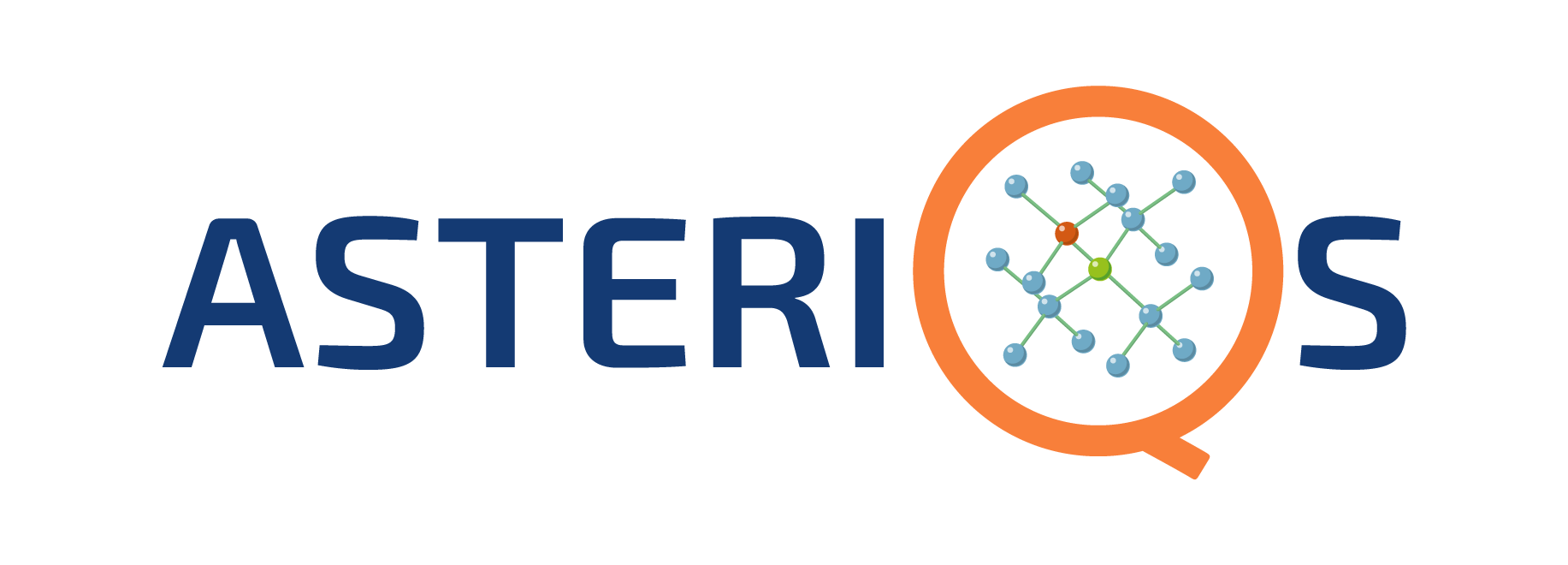Concept and scientific approach
Concept
The concept of ASTERIQS is based on exploiting the physical properties of the negatively charged nitrogen-vacancy (NV-) colour centre, embedded in ultrapure single crystals and/or nanocrystals of diamond.
Among solid-state spins, the NV centre of diamond is the most advanced in terms of applications, espcially at room temperature, compared to solid-state spin of other host materials such as SiC or hBN.
This is why ASTERIQS deliberately focuses on the NV- centre in diamond with some side activity addressing other new centres in diamond such as SiV, NiV, SnV, Sn2V, GeV which show promising features for applications and that have been pioneered by partners of ASTERIQS.
Scientific approach
The approach of ASTERIQS is to bring together technology and applications.
The academic partners of ASTERIQS each bring their unique expertise in NV- technology, but in addition they are dedicated to producing applications; Each industrial partner – several of them already partners of the DIADEMS project – addresses a specific field of applications: automotive industry, communications, bio-engineering, industrial production of diamond. In addition, they are all aware of research, all of them having their own research laboratory and actively contributing to the progress of NV- technology.
Workplan
By applying the tools of quantum technology, NV-based sensors with unprecedented sensitivity and spatial resolution will be developed in the scope of ASTERIQS. The following activities, corresponding to a specific work package (WP), are at the centre of the work in ASTERIQS.
The ASTERIQS work plan is divided into nine WPs: WPs 1 to 7 are dealing with the technical aspects of the project and horizontal work packages (WP8 and WP9) are dedicated to the training and the dissemination and exploitation activities, as well as to the project strategic and operational management tasks.
- “Theory and protocols” are related to WP1. All tasks of ASTERIQS exploit ultimate performances of the NV– It is therefore necessary to have a better theoretical understanding of its detailed atomic structure as well as is surrounding environment such as dopants or the influence of the various chemical species that can be present on the surface
- All applications that have been introduced previously rely on the availability of NV– centres with ultimate properties, which relies on the availability of material with highest grade quality produced with high reproducibility. Therefore, the production of material is transverse to all the developments of the project. It is looked at in WP2.
- Also, all applications of the NV– centre require precisely controlling and manipulating the NV– centre as well as efficiently retrieving the signal it produces. This implies optimized engineering of all the tools and which benefits to all applications planned in ASTERIQS. Engineering activities will be performed in WP3.
- WP4 is focused on the sensing devices based on established NV-centres technology.
- Beside magnetic field sensing, new sensing functionalities of diamond colour centres, which have high potential for future quantum sensing technologies and will ultimately form new input for device development, have appeared in the recent years. They will enable the construction of next-generation diamond-based quantum sensors, including high performance magnetometers, thermometers, electrometers and strain-gauges. This will be the main goal of WP5.
- WP6 will be looking at bio-applications and healthcare. The first field of new applications for diamond quantum sensors that will be considered in ASTERIQS is biology. Biosensing has previously been investigated as an application of NV– centres due to the high bio-compatibly of diamond and the room temperature quantum coherence of NV– centres
- Finally, the NV– centre in diamond is an ideal foundation from which one can build tools to investigate new fields of science and open unexplored areas. The role of WP7 is to explore them.
